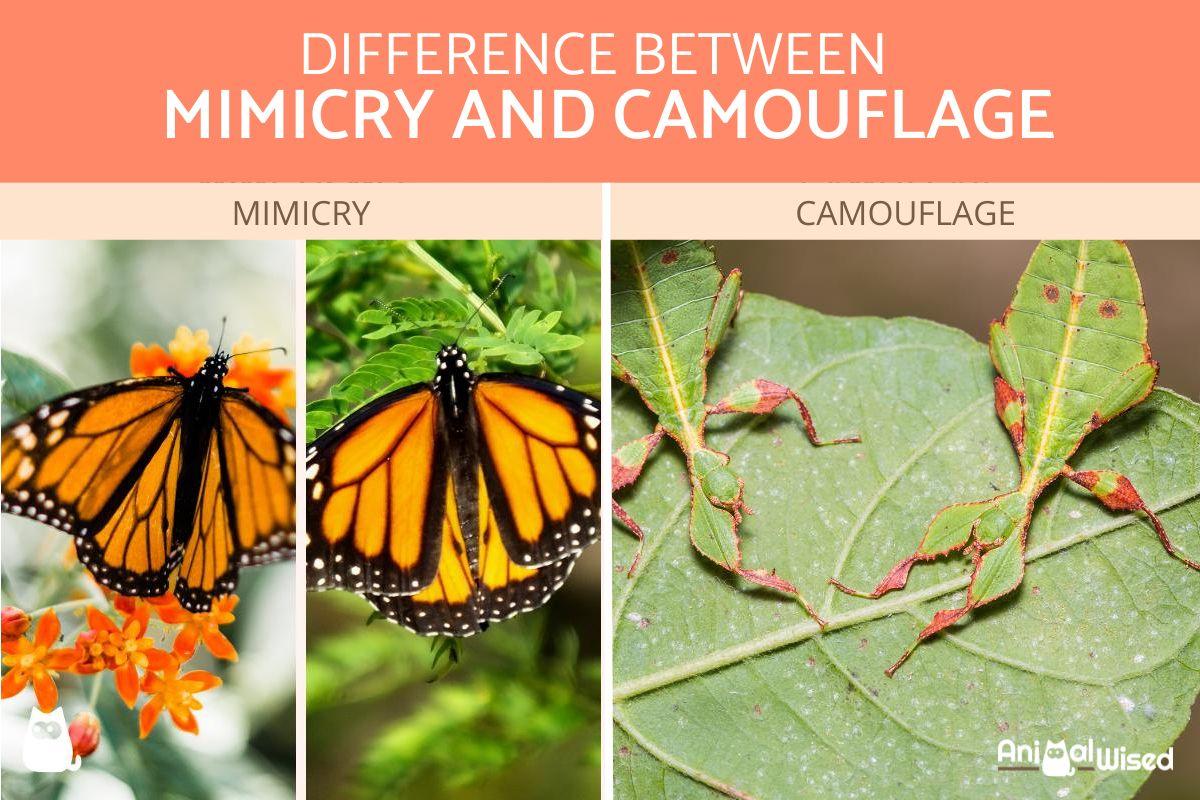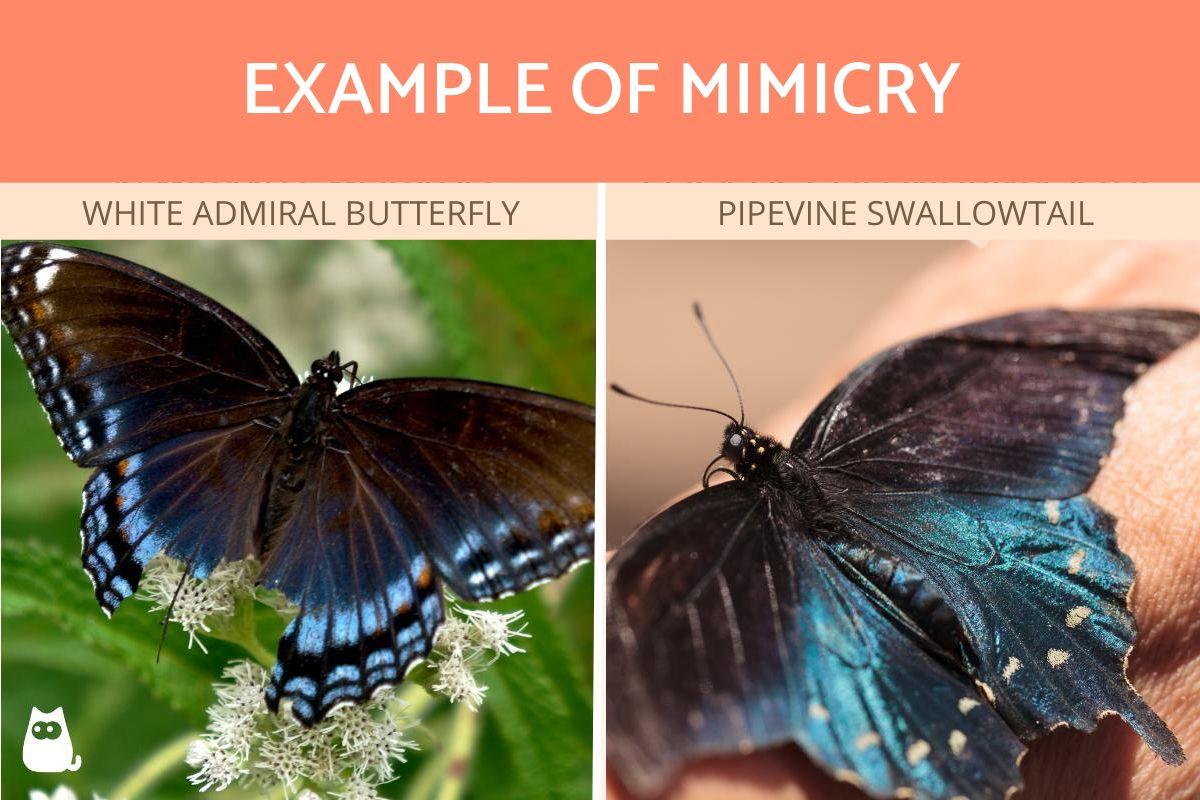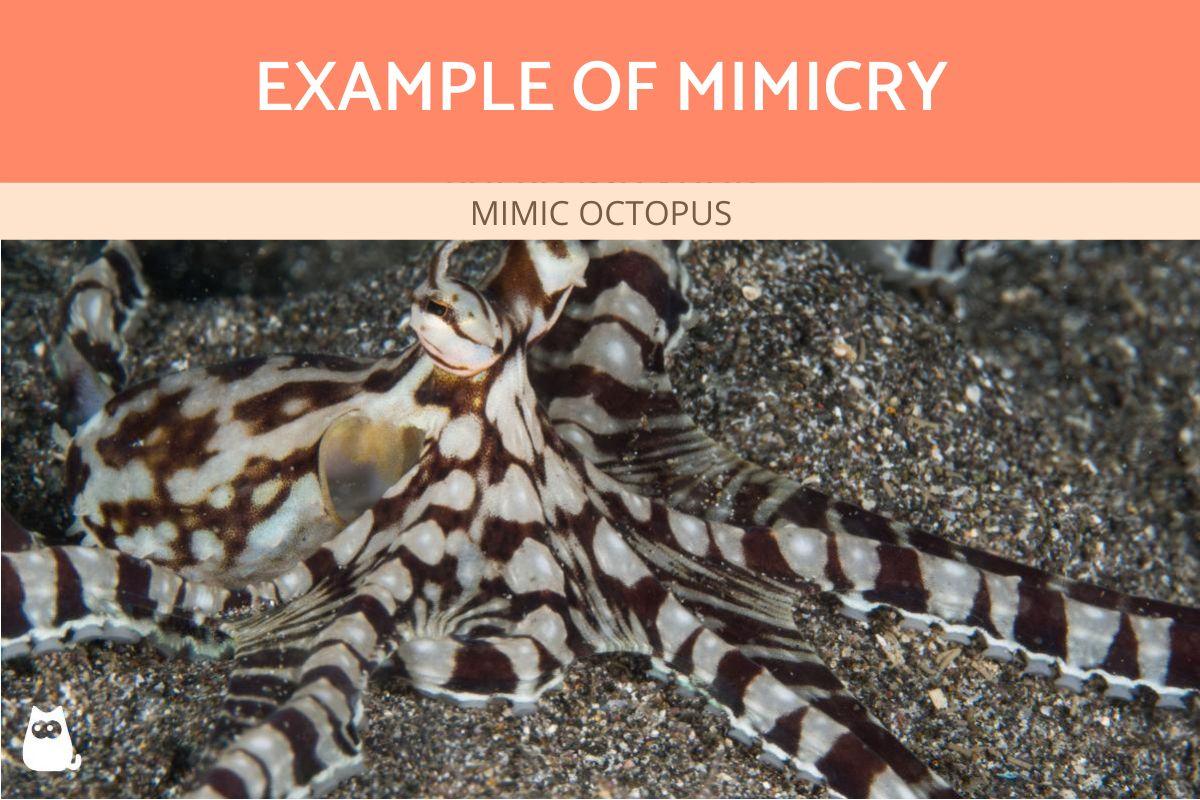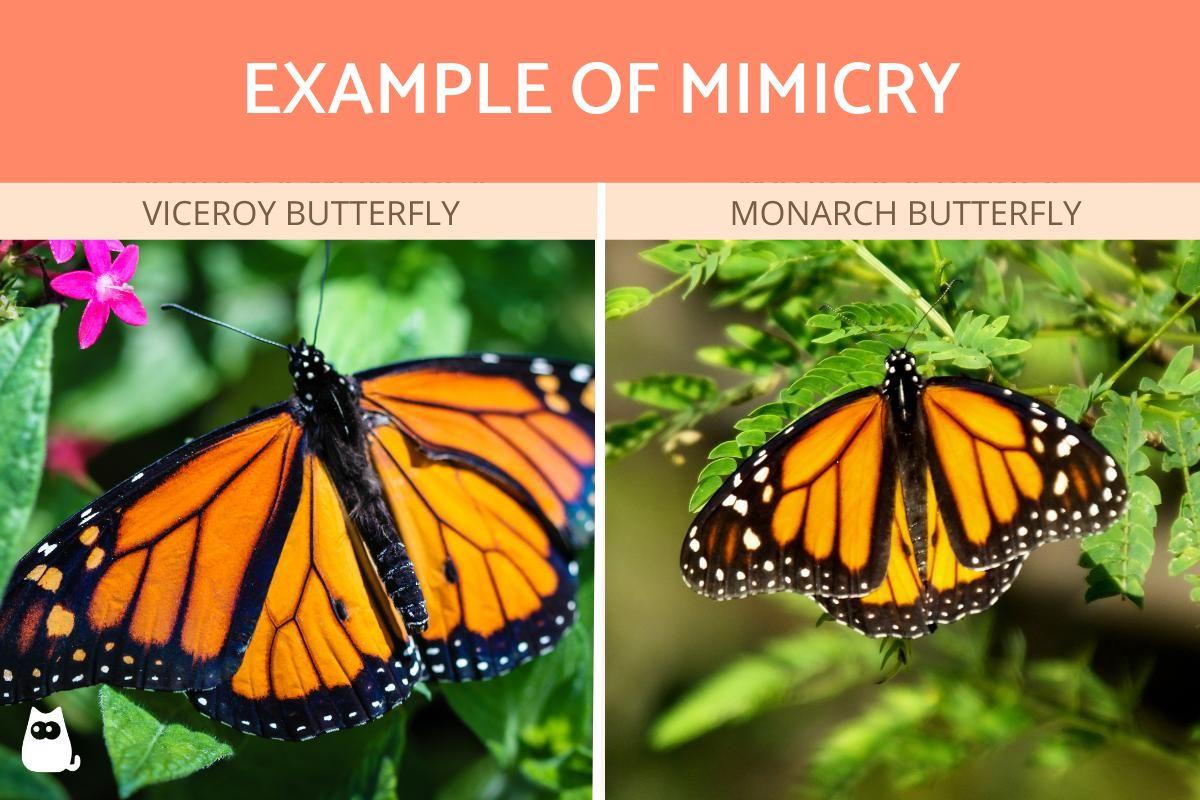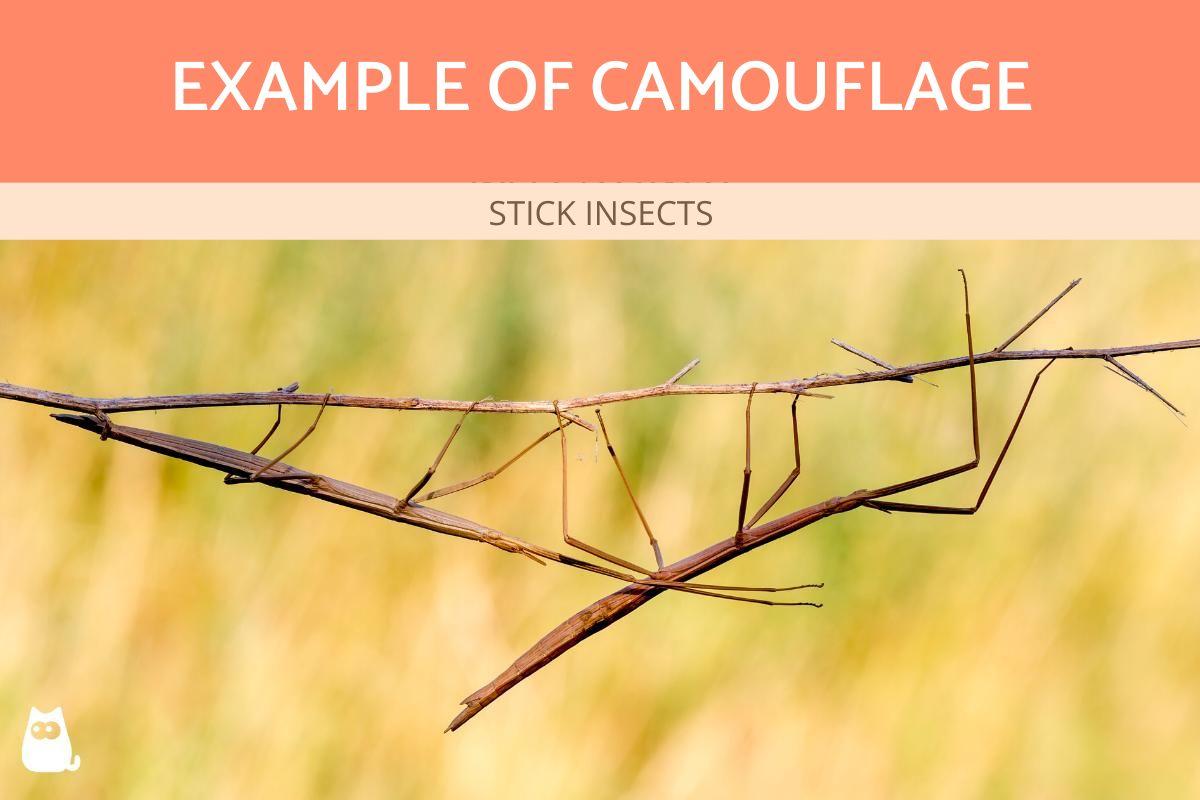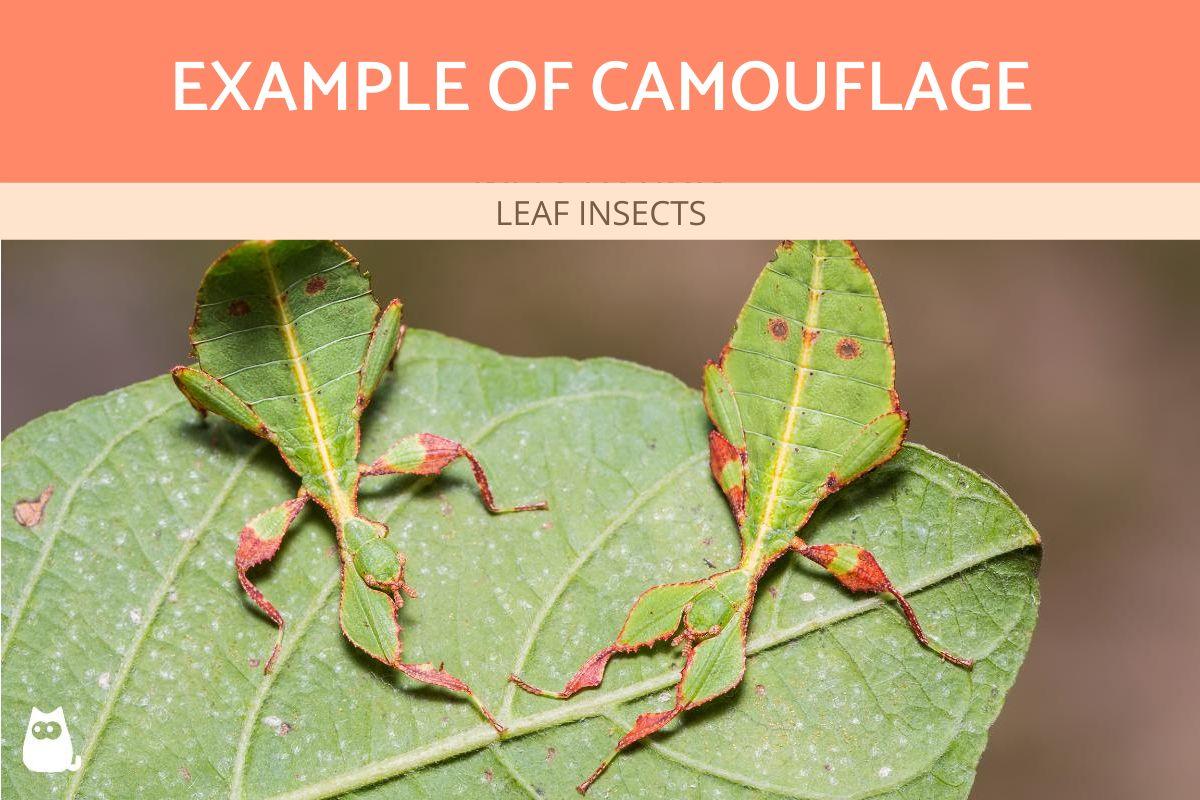What Is the Difference Between Camouflage and Mimicry?


In the natural world, survival is key. Animals have evolved a variety of adaptations to help them avoid predators and find food. Two of the most common adaptations are camouflage and mimicry. While camouflage and mimicry are often used interchangeably, there is a key difference between the two. Camouflage is about blending in with the environment, while mimicry is about resembling another organism.
In this AnimalWised article, we will explore the difference between camouflage and mimicry in more detail, as well as their main characteristics. We will also discuss examples of each adaptation from the natural world.
What is mimicry?
Mimicry is a fascinating natural phenomenon where one organism evolves to resemble another. It can be used for defense or for offense. Mimicry can involve appearance, behavior, or even sound. For example, some snakes can mimic the rattle of a rattlesnake to deter predators.
Mimicry can be classified into three main types:
- Batesian mimicry: this form of mimicry is a survival strategy where a harmless species closely resembles a toxic or dangerous one. By adopting the appearance of a dangerous neighbor, the mimic can deter potential predators. One classic example is the viceroy butterfly, which closely resembles the toxic monarch butterfly.
- Müllerian mimicry this type of mimicry involves multiple species that are all toxic or dangerous converging on a similar appearance. It's like a cooperative defense pact among species with shared dangers.Various species of bees and wasps often participate in Müllerian mimicry. Their similar coloring and patterns signal to potential predators that they all possess stingers and should be avoided.
- Aggressive mimicry this is a more sinister form of mimicry, where a predator disguises itself as something harmless or beneficial to approach prey unsuspected. It's a cunning tactic used by predators to get closer to their target without raising alarm.The female anglerfish dangles a bioluminescent lure resembling prey to attract and devour unsuspecting fish.
Mimicry is a complex and diverse phenomenon that is found all over the world, in all kinds of organisms, from insects to mammals. It is a testament to the incredible adaptability of life on Earth.
From jellyfish to fireflies, there are many animals that can glow in the dark. But how do they do it? Learn about the different ways that animals produce light.
What is camouflage?
Camouflage refers to the use of coloration, patterns, or other visual techniques that help an organism blend into its surroundings, making it difficult for predators or prey to detect it. Essentially, it's a form of visual deception used by countless species to enhance their survival in their respective environments.
Camouflage can be categorized into several forms based on the strategies and patterns used by organisms to blend into their surroundings. Here are some of the main types:
- Color matching: this type of camouflage involves having a body color that closely matches the colors of the surrounding environment. Many animals, like chameleons and some frogs, use color matching to blend into trees, leaves, or rocks.
- Disruptive coloration: organisms with disruptive coloration have bold patterns, spots, or stripes that break up their outline, making them harder to detect. For example, zebras use disruptive coloration to confuse predators.
- Mimicry: some animals mimic objects or other organisms in their environment. For instance, stick insects resemble twigs, leaf-tailed geckos look like dead leaves, and leaf insects appear like, well, leaves.
- Counter-shading: this type involves having darker coloration on the upper side of the body and lighter coloration on the underside. It helps animals appear flat and less conspicuous when seen from above or below. Sharks and deer are examples of counter-shaded animals.
- Background matching: organisms that employ this technique closely resemble the background they inhabit. For instance, certain moths resemble tree bark or lichen so that they blend seamlessly with their surroundings.
- Behavioral camouflage: some animals use their behavior to enhance camouflage. For example, the owl butterfly displays a large "eye" pattern on its wings when threatened, diverting the attention of predators away from its body.
- Seasonal camouflage: certain animals change their coloration with the seasons. The Arctic hare, for instance, is brown in summer and white in winter to blend with the changing landscape.
Camouflage is not limited to the animal kingdom. It's also used in military and human applications, where patterns and colors help soldiers or equipment blend into various terrains or environments, enhancing concealment and protection.
Have you ever wondered how a chameleon can change its color so quickly? It's all thanks to a special type of cell in their skin. Discover the fascinating science behind color changing animals in our article on 20 animals that change color.
What is the difference between camouflage and mimicry?
Camouflage and mimicry are both strategies that organisms use to survive in their environments. They involve altering appearance or behavior to avoid predators or prey, which can make them seem conceptually similar. However, these forms of adaptations operate in different ways:
Camouflage involves blending into the surroundings through color, pattern, or texture to become less visible to potential threats. The primary purpose of camouflage is to hide an organism from predators or prey, making it difficult to spot.
Mimicry, on the other hand, involves imitating the appearance, behavior, or characteristics of another organism, object, or feature. The main purpose of mimicry is to deceive or deter predators, prey, or competitors by resembling something else, whether it's a dangerous animal, an inedible object, or a different species.
The key difference lies in their objectives, camouflage aims to make an organism blend in with its surroundings, while mimicry involves imitating something else to gain a survival advantage.
It is important to note that camouflage and mimicry can overlap. Some animals use both camouflage and mimicry to defend themselves. For example, the viceroy butterfly mimics the monarch butterfly, which is poisonous to predators. The viceroy butterfly is also camouflaged to look like a leaf when it is resting.
Mimicry and camouflage are two amazing ways that animals survive in the wild. But did you know that some animals can even play dead to avoid being eaten? Learn about the fascinating animals that use this unique defense mechanism.
Examples of mimicry and camouflage in animals
Now that we've explored the theoretical differences between mimicry and camouflage, let's dive into some fascinating examples from the animal kingdom to see these concepts in action.
Examples of mimicry
- The white admiral butterfly (Limenitis arthemis) mimics the pipevine swallowtail (Battus philenor), which is poisonous.
- The mimic octopus (Thaumoctopus mimicus) can imitate various venomous marine animals, such as snakes.
- The viceroy butterfly (Limenitis archippus) resembles the monarch butterfly (Danaus plexippus), which is poisonous to predators. This deters predators from eating the viceroy butterfly.
- False coral snakes (Erythrolamprus) mimic true coral snakes (Micrurus), which are lethal.
Examples of camouflage
- Stick insects (Phasmatodea), leaf insects (Phylliidae), and bark insects (Tettigoniidae) have evolved to resemble twigs, leaves, and bark, respectively.
- Some species of caterpillar butterflies, such as the Papilionidae family, camouflage themselves on green leaves by mimicking the shape and color of the leaves.
- Brown-colored squirrels (Sciuridae) and deer (Cervidae) can camouflage themselves very well in their similarly colored environments.
- Zebras (Equus zebra) have black and white stripes that disrupt their outline, making them difficult for predators to see.
Animals have evolved these adaptations over time in order to survive and reproduce. Camouflage and mimicry are found in all kinds of organisms, from insects to mammals, and they are a testament to the incredible diversity and adaptability of life on Earth.
Mimicry and camouflage are just two of the many ways that animals adapt to their surroundings. Learn about other fascinating adaptations, such as bioluminescence, echolocation, and venom.








If you want to read similar articles to What Is the Difference Between Camouflage and Mimicry?, we recommend you visit our Facts about the animal kingdom category.
- Encyclopedia Britannica (2023). The adaptive value of biological coloration . Available at: https://www.britannica.com/science/coloration-biology/Illumination
- National Museum of Natural History (2018). Batesian and Mullerian mimicry in insects . Available at: https://www.mnhn.gob.cl/noticias/mimetismo-batesiano-y-mulleriano-en-insectos
- National Geographic (2023). Camouflage . Available at: https://education.nationalgeographic.org/resource/camouflage/
- Wickler, W.J.H. (2023). Mimicry . Encyclopedia Britannica. https://www.britannica.com/science/mimicry





